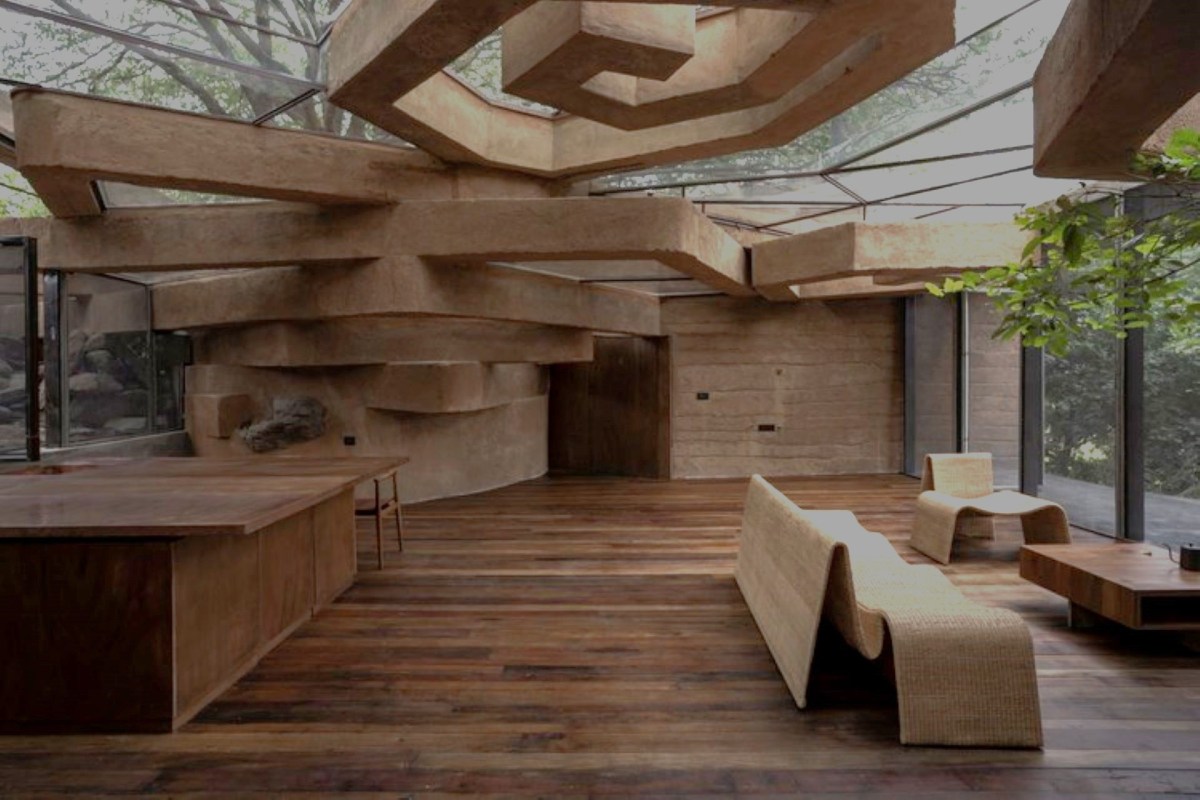Vinu Daniel's striking Chuzhi House has made waves in the world of architecture — and while its unique swirling design is remarkable, the project is even more notable for its use of natural and upcycled materials.
"The house as such is hidden beneath the earth," Daniel told Wallpaper. "It is our first subterranean build, but it's also our first attempt at building directly onto a rock face. We used a camouflage construction technique to blend the home into the landscape and keep it from hindering the natural beauty of its surroundings."
The house's incredible walls are made in part from 4,000 discarded plastic bottles, upcycled into beams that give the house a unique spiral structure. Meanwhile, the floors are reclaimed wood, and the house is made of mud instead of cement.

"All our earlier settlements have always been made of natural materials," a statement on Daniel's Wallmakers website reads. "But the sad fact is that today less than thirty percent of the world's population live in buildings made of earth, even though it is a more sustainable and durable material; the blame of which may be solely placed on the advent of industrialization and a widespread demand for 'cement' houses. We at Wallmakers have devoted ourselves to the cause of using mud and waste as the chief components, to make structures that are both utilitarian and alluring."

While he was studying architecture at the College of Engineering Trivandrum in India, Daniel received advice from prominent architect Laurie Baker, who passed on the wisdom he had received from Mahatma Gandhi: "The ideal house in the ideal village should be built using materials found within a five-mile radius."
Since then, local and natural sourcing has been a core tenet of Daniel's architectural mission — his Wallmakers project has used plastic waste, construction debris, mud, wood, and stone to construct gorgeous buildings.

"In India, discarded plastic and construction debris are commonplace. This is precious waste," Daniel told Wallpaper. "I look at it all as newly minted material because, who knows, this is all we may have in the future."
Join our free newsletter for easy tips to save more, waste less, and help yourself while helping the planet.









